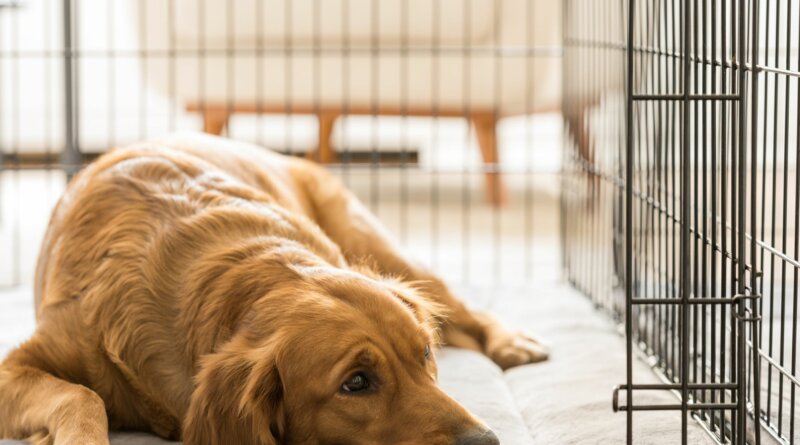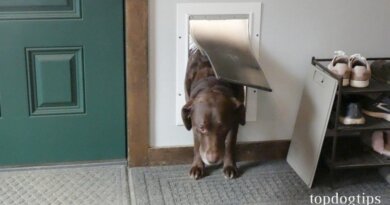How to Crate-Train an Older Dog
Perhaps you adopted an older dog. Congratulations and thank you! Or you never crate-trained the dog you got as a puppy, and now he’s 4 or 5 years old and household requirements changed, causing him to sometimes be crated. Or maybe you adopted a second dog or puppy, and the senior dog needs to be crated when you feed the youngster.
These are a few of many reasons why you might need to teach your older dog to eat or sleep—or just stay—in a crate. It’s not hard, but it may require patience from you.
Basically, you must assure your dog that the crate is a safe, protected place to go. It’s a place where he can relax. It’s his place. Never crate him in anger; if you are upset about something he did, just use your “Go crate” cue and treat him for going into the crate. He will not associate the treat with what he did that you didn’t like; it’s for going in the crate on cue.
You need a crate that’s big enough for him to stand, lie down, and to move around. Large dogs need big crates, so be sure there’s room for that in your home. And the crate needs a soft, comfortable bed, not a towel tossed in for good measure.
It’s simple to use food or treats to teach him to go into his crate. Feed him his meals in the crate, with the door open so he can come and go as he chooses (it’s a good idea to bungee or tie the crate door so it doesn’t move around—and we’re not going to close it during initial training). We’re setting the crate up to be “his” place, one where he gets food, relax on a soft bed, and knows he can leave.
Use treats, and give him a cue like, “Go crate,” and place a treat just inside the door of the crate. You will increasingly toss the treat farther back in the crate. Let him go in, get the treat, and leave. Repeat this frequently. Note: It’s extremely important that you continue to reward him for going in the crate. Always and forever—even after he’s trained.
Once your dog is staying in the crate for a little bit (like 15 seconds) on his own, you can toss in a treat, let him go in, and shut the crate door. Take a step back, say “Good boy!” and open the door and give him a treat. Repeat this with gradually longer amounts of time and with you a little farther away from the door each time. Intersperse longer with shorter periods with the door shut.
Eventually, as you slowly build up the time he’s in the crate, you’ll see that he starts to relax, just waiting for his reward for being a good boy and quietly relaxing in his crate.
Dogs with separation anxiety are more difficult to teach to crate, and some of these dogs have injured themselves if they have an anxiety attack while crated. Get help from a professional fear-free or force-free trainer and discuss separation anxiety with your veterinarian or a veterinary behaviorist. Some medications can help.
Note: There are crate alternatives for confining your dog, such as exercise pens (ex-pens), tethers, and so on. See “Creative Confinement: Dog Crate Alternatives.”




